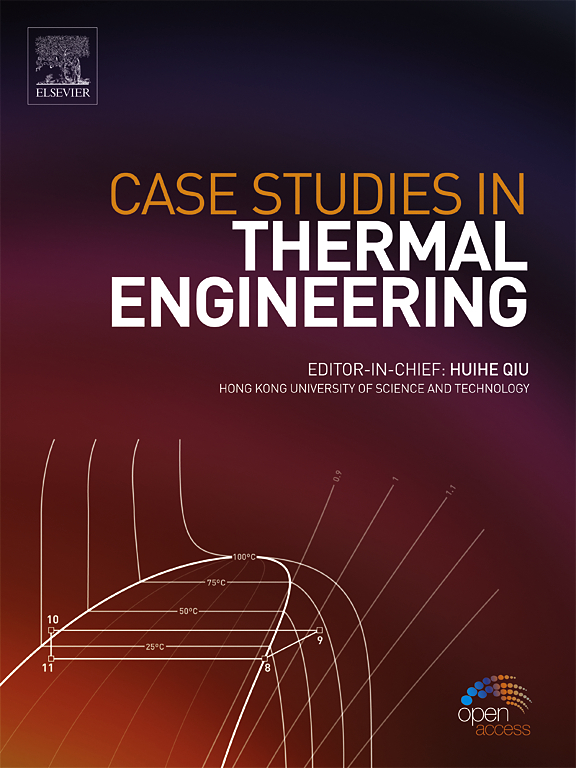Effect of axial ullage distribution of modular charges on the dynamic behavior of cylindrical particles in the combustion chamber
IF 6.4
2区 工程技术
Q1 THERMODYNAMICS
引用次数: 0
Abstract
The modular charge is a novel charge system designed to cooperate with the automation of large-caliber guns. Using Computational Fluid Dynamics (CFD) and Discrete Element Method (DEM), the motion and distribution of cylindrical particles driven by high-temperature, high-pressure gas during ignition and flame spreading were simulated in a two-module charge. Model validation was achieved through comparison with experimental data from simulated ignition experiments. Different ullage distributions were achieved by varying the axial distance between the primer and the first module. The results indicate that while maintaining a constant axial ullage between Module 1 and Module 2 (D2), increasing the axial distance between Module 1 and the primer (D1) leads to distinct changes in the particle packing structure. Particles stabilize in horizontal and steep slope accumulations from the breech to the front end of the combustion chamber in a stable state. However, the axil length of horizontal accumulation decreases linearly with increasing D1, and the axil length of steep slope accumulation shows a second-order polynomial relationship with D1. The inclination angle of the steep slope initially decreased and then increased. Axial ullage distribution affects the forces on the particles, velocities, and trajectories, resulting in uneven distribution within the combustion chamber.
模块化装药的轴向充气分布对燃烧室中圆柱形颗粒动态行为的影响
模块化装药是一种新型装药系统,旨在配合大口径火炮的自动化。利用计算流体动力学(CFD)和离散元素法(DEM),在双模块装药中模拟了高温高压气体驱动圆柱形颗粒在点火和火焰蔓延过程中的运动和分布。通过与模拟点火实验的实验数据进行比较,对模型进行了验证。通过改变引燃器和第一个模块之间的轴向距离,实现了不同的膛压分布。结果表明,在模块 1 和模块 2 之间保持恒定轴向空隙(D2)的同时,增加模块 1 和引燃器之间的轴向距离(D1)会导致粒子堆积结构发生明显变化。颗粒在从后膛到燃烧室前端的水平和陡坡堆积中处于稳定状态。但是,水平堆积的腋长随 D1 的增大呈线性减小,而陡坡堆积的腋长与 D1 呈二阶多项式关系。陡坡的倾角先减小后增大。轴向淤积分布会影响颗粒受力、速度和轨迹,导致燃烧室内分布不均。
本文章由计算机程序翻译,如有差异,请以英文原文为准。
求助全文
约1分钟内获得全文
求助全文
来源期刊

Case Studies in Thermal Engineering
Chemical Engineering-Fluid Flow and Transfer Processes
CiteScore
8.60
自引率
11.80%
发文量
812
审稿时长
76 days
期刊介绍:
Case Studies in Thermal Engineering provides a forum for the rapid publication of short, structured Case Studies in Thermal Engineering and related Short Communications. It provides an essential compendium of case studies for researchers and practitioners in the field of thermal engineering and others who are interested in aspects of thermal engineering cases that could affect other engineering processes. The journal not only publishes new and novel case studies, but also provides a forum for the publication of high quality descriptions of classic thermal engineering problems. The scope of the journal includes case studies of thermal engineering problems in components, devices and systems using existing experimental and numerical techniques in the areas of mechanical, aerospace, chemical, medical, thermal management for electronics, heat exchangers, regeneration, solar thermal energy, thermal storage, building energy conservation, and power generation. Case studies of thermal problems in other areas will also be considered.
 求助内容:
求助内容: 应助结果提醒方式:
应助结果提醒方式:


